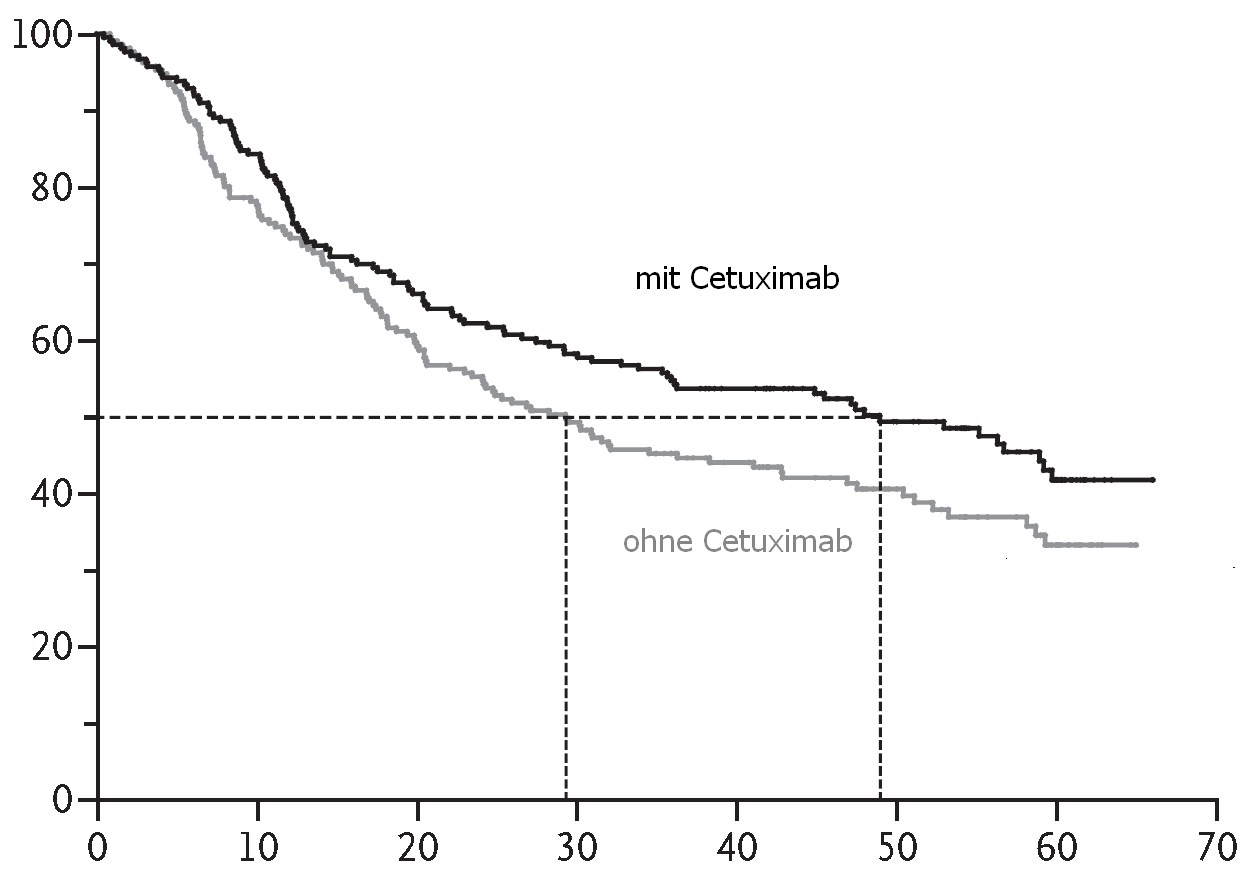Bonner-Studie
Titel
Erbitux und Strahlentherapie für Patienten mit lokal fortgeschrittenen Kopf-Hals - Tumoren
Fragestellung
Verbessert Cetuximab das Ergebnis der Bestrahlung lokal fortgeschrittener HNO-Tumoren?
Antwort
Cetuximab erhöht das Gesammtüberleben und die lokoregionäre Kontrolle einer Bestrahlung lokal fortgeschrittener HNO-Tumore signifikant.
Ergebnis
Random |
Erbitux + 70-77 Gy RT | 70 - 77 Gy RT | P-Wert | HR |
Überleben |
49 M | 29,3 M | 0,03 | 0,74 |
| LRFS | 24,4 M | 14,9 M | ||
| 5a-OS | 46 M | 36 M |

Nach Daten von (1)
p16 (3)
Patienten mit p16-positiven Oropharynx-Tumoren haben eine besse Prognose.
p16-positive profitieren mehr von Cetuximab als p16-negative.
Patienten
424 Patienten von 1999-2002, 73 Zentren, USA und 14 andere Länder
Tumor
- 253 Oropharynx
- 108 Larynx
- 63 Hypopharynx
- Stadium III und IV,
- 70% T1-3,
- 30% T4,
- 80% N+
Studie
Teil von
Radiotherapy plus Cetuximab for Squamous-Cell Carcinoma of the Head and Neck.
NEJM 354 (2006): 567-78
2.) Bonner JA et al.:
Radiotherapy plus cetuximab for locoregionally advanced head and neck cancer: 5-year survival data from a phase 3 randomised trial, and relation between cetuximab-induced rash and survival.
Lancet Oncol 2010; 11: 21 – 28
3.) Rosenthal DI, et al.:
Impact of p16 status on the results of the phase III cetuximab/radiotherapy ‘Bonner’ registration trial for locoregionally advanced squamous cell carcinoma of the head and neck.
ASCO 2014
